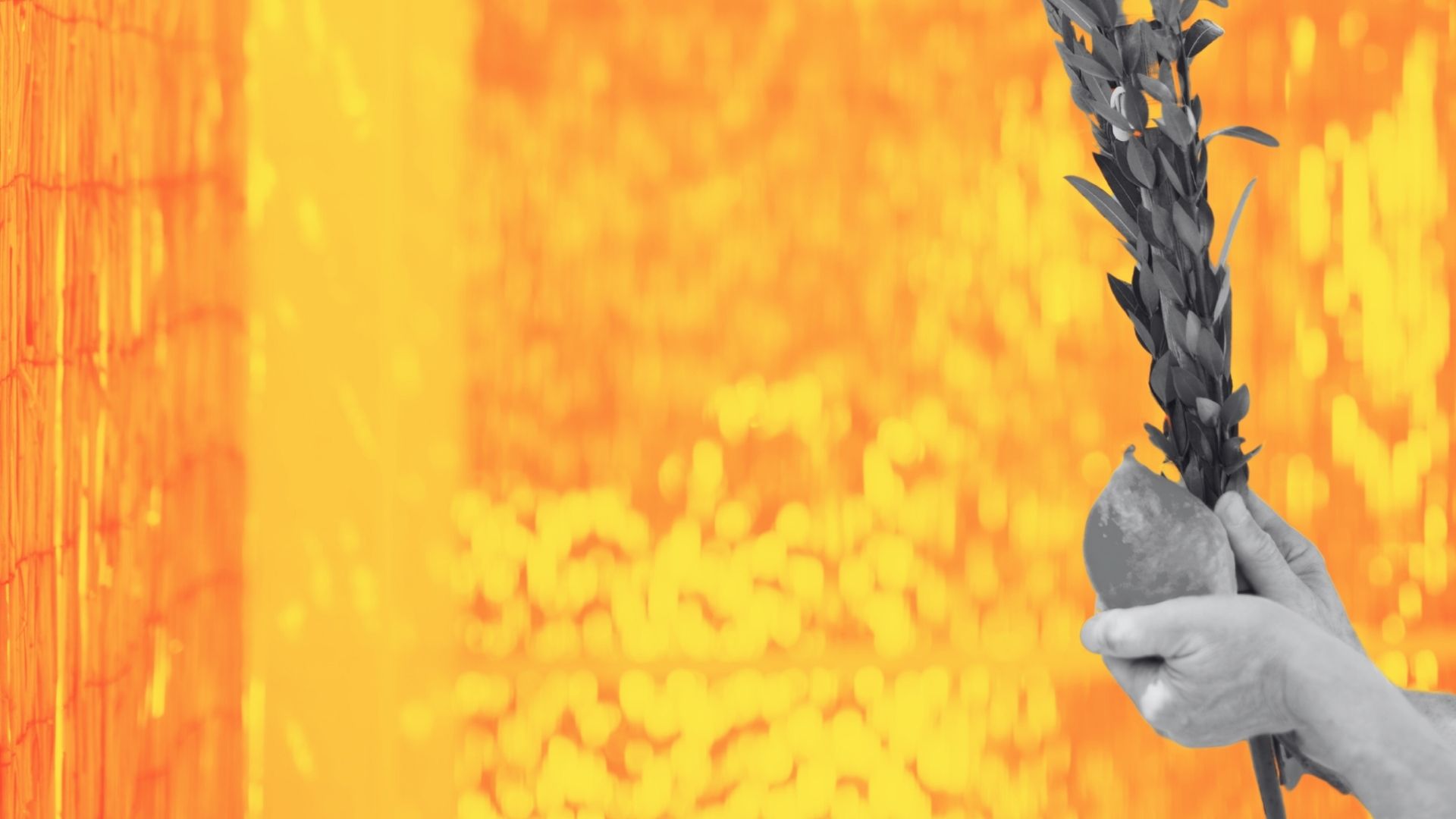Editor's Note
The biblical festivals are not only central to Jewish life and identity—they also act as windows into God’s redemptive plan for the nations. At a time when Jewish–Christian relations are often marked by tension and misunderstanding, the global church is called to build bridges of understanding, love, and witness.
This new series explores the holidays of world religions to help us understand and engage meaningfully and missionally with our neighbours of other beliefs in practical ways. In this series, we uncover what we can learn from these festivals that can enrich our biblical understanding, discipleship and mission. Each article invites the church to deepen faith, reach out to religious communities with humility and love, and participate in God’s reconciling mission to the world.
If you were to walk through Jerusalem during Sukkot, you would find the city transformed. Balconies, courtyards, and sidewalks are filled with makeshift huts covered in branches and palm fronds. These tabernacles are fragile, open-roofed shelters where families eat, sing, and sometimes even sleep. At night, you can look up through the leafy covering and see the stars. The joy of this seven-day festival is palpable, yet its fragility is clear. Each sukkah (booth) is a reminder of the Israelites’ 40-year wilderness journey and of God’s sustaining presence. By leaving the security of our homes each year, Jewish people remember that their true shelter comes not from brick and mortar but from the same God who fed us with manna, clothed us without wear and tear, and guided us by cloud and fire. It’s no wonder that Jewish tradition refers to this holiday as Z’man Simchateinu (a season of our joy).
By leaving the security of our homes each year, Jewish people remember that their true shelter comes not from brick and mortar but from the same God who fed us with manna, clothed us without wear and tear, and guided us by cloud and fire.
Biblical Foundations
After the sober reflection of Yom Kippur the week before, the Jewish people now celebrate God’s provision, presence, and protection. Sukkot, which begins this year at sundown on the sixth of October and ends at sundown on the 13th, is best known as the Feast of Tabernacles or the Feast of Booths.
In Scripture, God establishes this feast as a harvest festival and a memorial of how he cared for the Israelites in the wilderness:
‘You shall dwell in booths for seven days. All native Israelites shall dwell in booths, that your generations may know that I made the people of Israel dwell in booths when I brought them out of the land of Egypt: I am the Lord your God’ (Lev 23:42-43).
It is also one of the three pilgrimage holidays, the only one in autumn, when the Lord commanded his people to come and worship in Jerusalem:
‘Three times a year all your men are to appear before the Sovereign Lord’ (Exod 23:14–17).
Most Jewish festivals are closely connected with the agrarian cycle of Israel. Sukkot arrives at the end of the harvest season, just as the first winter rains touch the land. Sometimes referred to as the Feast of Ingathering, it is designed both as thanksgiving for the produce of the land and as a lived parable of dependence on the Lord.
is designed both as thanksgiving for the produce of the land and as a lived parable of dependence on the Lord.

Sukkot in the Time of Jesus
In the first century, two Temple rituals in particular made this season especially significant. The first was the Illumination of the Temple. Enormous golden candelabra, each with four great lamps, lit up Jerusalem, casting light across the city. This scene recalled the shekinah glory and the pillar of fire that guided Israel in the desert. Against this backdrop, Jesus proclaimed, ‘I am the light of the world.
Whoever follows me will not walk in darkness, but will have the light of life’ (John 8:12).
Following the Ceremony of Light was the Water-Drawing Ceremony. Each day, priests drew water from the Pool of Siloam while the people recited Isaiah 12:3: ‘With joy you will draw water from the wells of salvation.’ On the climactic last day of the feast, Jesus stood and cried, ‘If anyone thirsts, let him come to me and drink. Whoever believes in me, as the Scripture has said, “Out of his heart will flow rivers of living water” ’ (John 7:37-38). John explains that Jesus was speaking of the Spirit, who would later be poured out on all believers (7:39).
Through these declarations, Jesus identified himself with the very symbols of Sukkot: both the light and the water. What had pointed to God’s provision in the wilderness now found its fulfillment in him.
With the Temple no longer standing, building a sukkah is the main way most people celebrate Sukkot today. Yet the meaning of the festival has not been lost with time, for it continues through the very instructions for building a sukkah. According to the Rabbis, it should let in the starlight yet provide more shade than open sky. Rain may fall through, but it is not proper to sleep in the sukkah while it rains, honoring the Lord’s provision for comfort. A sukkah cannot be built under a tree, since a tree already serves as a dwelling, which would defeat its purpose. I’m sure that entire volumes of the Talmud are devoted to the details of sukkah construction, but the point is this: we are to recognize our utter dependence on the Lord and rejoice in his unfailing protection and care.
The Messianic Hope of Sukkot
Sukkot doesn’t only look backward; it also looks forward. The prophet Zechariah envisioned a day when all nations would join Israel in celebrating this feast:
‘Then everyone who survives of all the nations that have come against Jerusalem shall go up year after year to worship the King, the Lord of hosts, and to keep the Feast of Booths’ (Zech 14:16).
This eschatological vision points to the universal reign of God’s Messiah. The book of Revelation echoes this imagery when it declares that God will once again ‘dwell’ (tabernacle) with humanity:
‘Behold, the dwelling place of God is with man. He will dwell with them, and they will be his people, and God himself will be with them as their God’ (Revelation 21:3).
But today, we live in this middleground caught between past provision and future anticipation. The Kingdom of God is here but not yet. Even now, we know God’s interaction in our lives is as present today as it was then and as it will be. While we inhabit this in-between, celebrating Sukkot invites us to leave our comfort behind and dwell, even briefly, in something fragile. In doing so, we remember that the Messiah came to do the same: ‘[God] became flesh and tabernacled among us’ (John 1:14).
For Christians today, Sukkot offers at least three enduring lessons:

Dependence on God’s Provision. Just as Israel’s shelters were fragile, so are our lives. Sukkot reminds us that ‘unless the Lord builds the house, those who build it labor in vain’ (Ps 127:1).

Rejoicing in God’s Presence. True joy does not come from the abundant harvest but from God himself. Jesus promises the Light of Life and Living Water, both resources that sustain us even in times of wilderness.

A Call to Hospitality. The sukkah is open to guests, symbolizing generosity and welcome. This, in Jewish tradition, is known as ushpizin, where it is considered a mitzvah (commandment or good deed) to invite different guests to join you for each night of the holiday. For Christians, this reflects the gospel’s call to extend hospitality, especially to the marginalized and the unreached, including our Jewish neighbors, demonstrating the love of Messiah in tangible ways.

How Christians Can Celebrate and Bear Witness
While the narrative of this hopeful celebration will never change, these past years have cornered Israel in global tension. On this two-year anniversary of the October seventh attack, which struck during Sukkot, many Jewish people are struggling with hopelessness. Yet, rather than giving cause for doubt and abandoning celebrations like Sukkot, this tragedy only deepens our need to embrace them and the hope they proclaim.
Over the past year, we’ve seen a growing openness among Israelis, with hundreds requesting Hebrew New Testaments, beginning to wonder if Yeshua is truly the Messiah. As Sukkot comes again, we are reminded that God has never abandoned his people, and he promises to dwell with us and bring lasting peace, even when all seems lost.
As Sukkot comes again, we are reminded that God has never abandoned his people, and he promises to dwell with us and bring lasting peace, even when all seems lost.
Perhaps this year, learning about the High Holidays can spark a solidarity that outlasts the season itself. How might you consider celebrating this God appointed feast? Consider building a simple sukkah with your family or church, share meals outdoors, reflect on passages like Leviticus 23, John 7–9, or Revelation 21, or use the occasion to consider God’s provision in your own lives.
What about sharing the wilderness story of the Israelites with your own kids on a deeper level? Grab those cardboard boxes from recycling or stack blankets and pillows across couch cushions like many of us did as kids, but this time, explain that this is a tiny picture of the sukkah: a fragile shelter that reminds us God provides for us, even when life feels uncertain. Help them to decorate it with lights, drawings, or leafy branches, and encourage them to invite ‘guests’ into the fort, teaching hospitality and the joy of sharing God’s blessings. Let them see how something so simple can become a special space. You could even ask your Jewish neighbors to help build your first sukkah in your own home!
Sukkot is also a beautiful opportunity to invite Jewish friends for a meal, honoring the spirit of hospitality that the holiday embodies. You might even strike up a conversation by asking, ‘What are you thankful for?’, ‘How has the Lord sustained you in the past season?’, or, ‘Do you think that God still tabernacles with us today?’ As you celebrate, bear witness to the Messiah who fulfills the meaning of Sukkot. After all, he is the one who provides living water for our thirst, light for our path, and who will one day dwell with us forever.
God’s presence is not confined to a week in the calendar or to a fragile hut on a balcony in Jerusalem. It is a living reality for all who trust in him.
As we reflect on Sukkot, let us be reminded that God’s presence is not confined to a week in the calendar or to a fragile hut on a balcony in Jerusalem. It is a living reality for all who trust in him. The same God who sheltered Israel in the wilderness, who came to dwell among us in Jesus, and who promises to make his dwelling with us forever, still invites us to rejoice in him today. To step into the tabernacle, even in spirit, is to confess that our security is not in what we build but in the One who has already come to be our shelter. And as we wait for the day when all nations will stream to Jerusalem to worship the King, we, as believers, are called to live as signs of that hope today.

